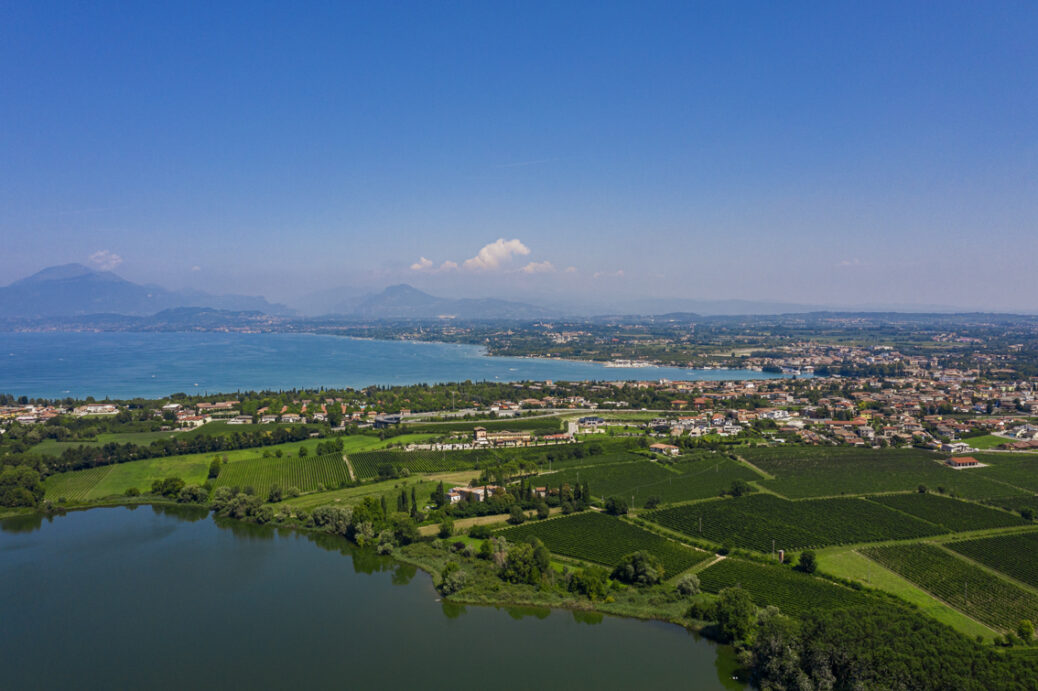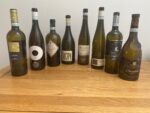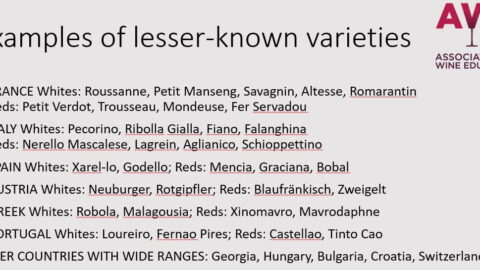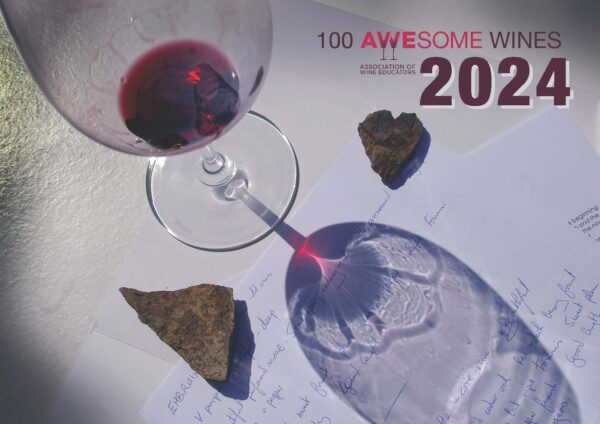Of all the fascinating white wines produced in north-eastern Italy, Lugana is one of the least well known. On searching the web, one comes across quite a lot of misinformation about the wines and the region, so hopefully this short article will help. Incredibly, there are web pieces that state that Lake Lugano is near the vineyards – it is, in fact, over 100 miles away! The production area for Lugana wines lies to the south of Lake Garda, which is Italy’s largest lake. The vineyards straddle two regions: Lombardia in the west, in the communes of Sirmione, Pozzolengo, Desenzano and Lonato, and Veneto in the east, in the commune of Peschiera del Garda. The vineyards comprise over 2,560 hectares, with some 210 grape growers, producing, in 2022, some 28 million bottles. There has been a five-fold increase in production in the last twenty years. Seventy per cent of the production is exported.
Vines have existed here since the Bronze Age, and wine has certainly been made since Roman times. However, much of the land that is now covered with vineyards was once a marshy forest. It began to be reclaimed in the era of the Republic of Venice.
Now, every wine region claims to have its unique characteristics, but Lugana has individuality galore. Let’s start with the Turbiana grape variety. This is an indigenous variety, which was, until recently, considered to be a member of the Trebbiano family. In fact, it is related to Verdicchio (to my mind a really underrated grape in its own right). Turbiana can produce wines with great ageability – the grape is naturally high in acidity and low in pH – but also delights in youth. The variety is gently aromatic, sometimes with a subtle grassiness. The bunches are relatively compact and the berries thick skinned.
As I have written previously, when discussing Bardolino, this is an area that was formed by glaciers. Lake Garda, an end-moraine, was created some 10,000 years ago. The sedimentary Lugana soils are stratified clays of morainic origin. They are mainly calcareous (argilo-calcaire) and very rich in minerals. As we go into the higher vineyards the soils become more sandy, and there is gravel in places. Here the wines are less mineral, and generally have more body.
The climate is mild, and breeze from the lake rustle through the vineyards, helping reduce the incidence of mildews. There are two particular winds: the Peler, from the north, which blows in the morning and Ora, from the south in the afternoon.
There is only 1 DOC for Lugana, but within this there are 5 wine types:
Lugana DOC Spumante
Lugana DOC
Lugana DOC Superiore
Lugana DOC Riserva
Lugana DOC Vendemmia Tardiva.
Spumante
This category was introduced in 1975. The wines are produced by both Charmat (Martinotti) and Classic methods. The wines are fresh and elegant, and the Classic Method wines have lovely aromas of autolysis.
Lugana
This accounts for nearly 90% of the DOC production. The wines are usually pale straw yellow coloured, often with green hues. The nose has both floral and almond notes. The palate is fresh, sometimes steely and the best wines have an underlying power.
Lugana Superiore
This category was introduced in 1998. The wines require a minimum of 12 months ageing prior to release. They are usually a deeper, gold colour. The nose is more complex, with lifted aromas, often with herby and citrus tones. The palate is multi-layered with nut notes including hazelnut and almond. As with all Lugana wines there is a fresh acidity, striking minerality and salinity to the fore.
Lugana Riserva
The Riserva category introduced in 2011. The wines have a minimum of 24 months maturation before release, including at least 6 months in bottle. There can be a gentle spiciness as the wines may be matured (entirely or partially) in large botti, or occasionally barriques. New wood is not normally used. There is a more evolved nose and palate, with complex aromas, including smoky and gunflint notes. These are wines in which reductive aromas, if present, can add to the edginess. On the palate they are fuller, with overt minerality, and a long finish. Riservas can be aged for several more years, gaining richness and tertiary flavours. .
Vendemmia Tardiva
Made from late-picked, over-ripe grapes, harvested in late October or early November. The grapes are allowed to overripen on the vine, with a late harvest between late October and early November. The wines are concentrated, but not excessively sweet, with acidity balancing the residual sugar.
I recently had the opportunity to taste a range of Lugana wines at an online seminar arranged by Studio Cru and hosted by Edoardo Peduto and Ambra Beradi of the Consorzio Lugana DOC and Richard Baudins, wine writer specialising in Italy.
The range tasted, as illustrated, was all from family owned estates. It was really fascinating, with the wines sharing a tautness and hint of bitterness, together with marked salinity. There was an incredible array of aromas, including, dill, orange blossom, peach kernel, melon and wet stone. The wines had great length.
I was particularly impressed by the Riserva wines. The 2020 Zenegaglia Lugana DOC Riserva ‘Luna del Lago’ is really expressive wine that zings and sings. The wine spends 18 months in Botti, and has a very gentle spiciness. The 2018 Avanzi Lugana DOC Riserva ‘La Borghetta’ was fascinating. On the day of the seminar the wine looked a little flat, and tasted somewhat oxidised, smoky, and vegetal. This may have been an individual closure issue. However, I kept the opened bottle, which was 80% full, in the refrigerator for two days, and upon retasting it had ‘unoxidised’. The topic of ‘reversible oxidation’ is briefly covered in my latest book. After the two days the wine was delicious. The 2020 La Rifra Lugana DOC Riserva ‘Il Bepi’ spends 24 months in large barrels, and is a powerful wine some spiciness, and pronounced almond flavours.








